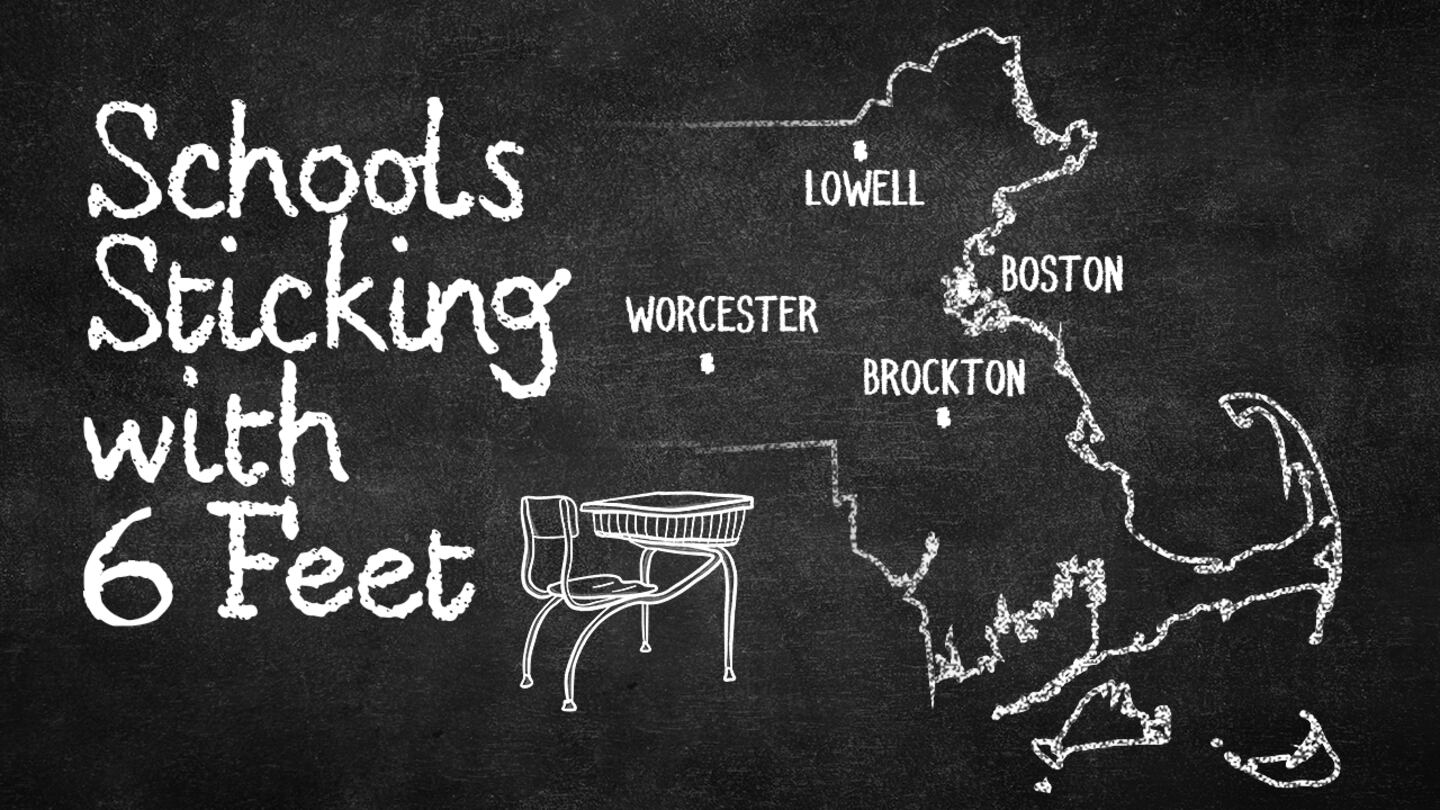BOSTON — When it comes to safe spacing in schools, the question many are asking now is three feet…or six.
The space between students in the classroom is a factor many districts are looking at as they consider getting kids back to in-person learning. It’s hotly debated on social media groups, as families compare how spacing in the town next door compares to their own district.
“The real blocker to getting kids back to school has been this requirement that children when seated at desks, and wearing a face-covering must be six feet apart,” Medfield mother Lauren Liljegren told Boston 25 News. “In order to get six feet of spacing between each student, you can only fit half the kids in the class.”
For many Massachusetts towns with older school buildings and smaller classrooms, that has translated into a hybrid format of in-person learning at most.
But the tide may be turning in some communities.
“Districts have seen that spread is incredibly limited in schools. That’s both across the world and in the country, and here in Massachusetts, and because of that, you’re starting to see districts posit the idea of bringing more kids back into school,” said Jeffrey Riley, Massachusetts Commissioner of Elementary and Secondary Education or DESE.
Medfield recently announced plans to return all grades to in-person learning by the end of the year, in some cases, at distances of less than six feet.
Prof. Joseph Allen, with the Healthy Buildings program at Harvard tells Boston 25 News if everyone is masked, the science supports a return to the classroom with three feet of spacing between students.
“When these controls are in place: masking, ventilation/filtration, we don’t see widespread exposure happening in any indoor environment,” Prof. Allen told Welch. “We don’t think six-foot distancing makes sense, and it shouldn’t be the reason we’re keeping kids out of school, precisely because the costs of keeping kids out of school are so severe.”
Allen says he believes hybrid learning leads to more chances for transmission, because instead of stringent guidance followed in school, students are sometimes learning in other mixed settings on their remote days.
But with the CDC still recommending six feet of spacing, the Massachusetts Teachers Association tells Boston 25 News, they disagree with reducing the spacing.
“We’re entering a different phase of the pandemic because of the new variants, so now is not the time to be less stringent about guidelines, it’s important to be even more stringent, so we can keep people safe,” said MTA President Merrie Najimy.
The decision on going back to school at less than six feet of distancing comes down to the district level and what has been negotiated with teachers in each town.
Boston 25 News reached out to some of the biggest school districts in the state to see what their plans are.
A spokesperson for Boston Public Schools said the district does not have the space to bring all students back at six feet of spacing, and the district is not planning to reduce that spacing this school year.
Worcester School Superintendent Maureen Binienda said the same is true in her district.
In Lowell, School Committee member Jackie Doherty tells Boston 25 News, “We do not have the space available for a full in-person return to school at 6 feet distancing.” Doherty went on to say, “The Lowell School Committee has not taken a formal vote to lessen the distance from our current requirement of 6 feet.”
In Brockton, a school spokesperson wrote in a statement to Boston 25 News:
“…[W]e determined that we would be able to successfully create six feet of space between students when at 50 percent capacity.” She went on to say, “If we are able to return fully in person this year, we would lean on the expertise of the medical professionals at the Brockton Board of Health who have guided our safety protocols throughout the pandemic.”
“People have different opinions on local control. In Massachusetts, it’s the rules of the road. I think, you know, at the end of the day, what we have to do is, is given the parameters we’re given, make the best decisions we can on behalf of kids,” said Commissioner Riley.
“I was completely naive to the tremendous amount of power individual school boards and the individual district teachers unions have,” Liljegren told Boston 25 News. She says families need to have a voice.
After her children struggled with remote learning on hybrid days, she says she decided to take them out of Medfield Public Schools. She’s now running for the town’s school committee herself, she says, in hopes of having more of a say next year, so her kids can return to their neighborhood school.
“Families must have a choice to go to school five days a week,” she concluded.
Download the free Boston 25 News app for up-to-the-minute push alerts
>> Complete local and national coronavirus coverage here
RESOURCES:
- Complete local and national coronavirus coverage here
- Follow us on Facebook and Twitter | Watch Boston 25 NOW









